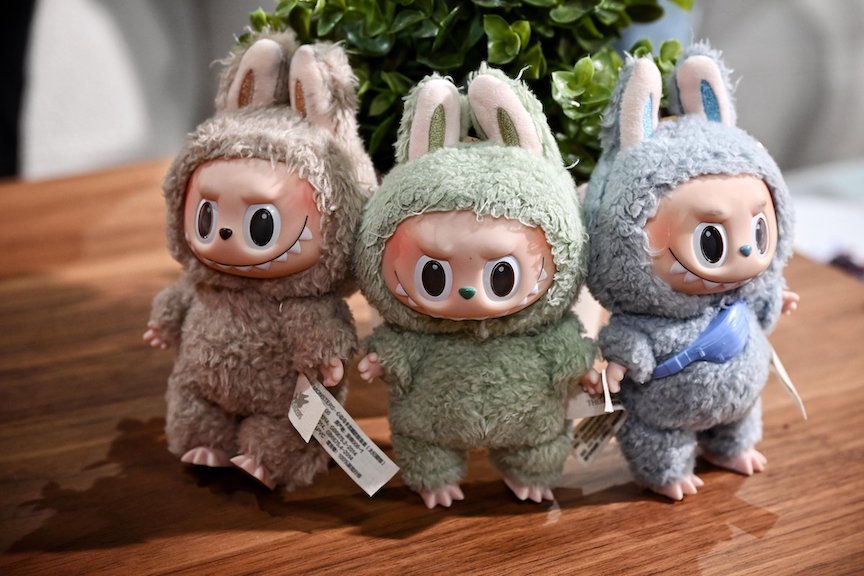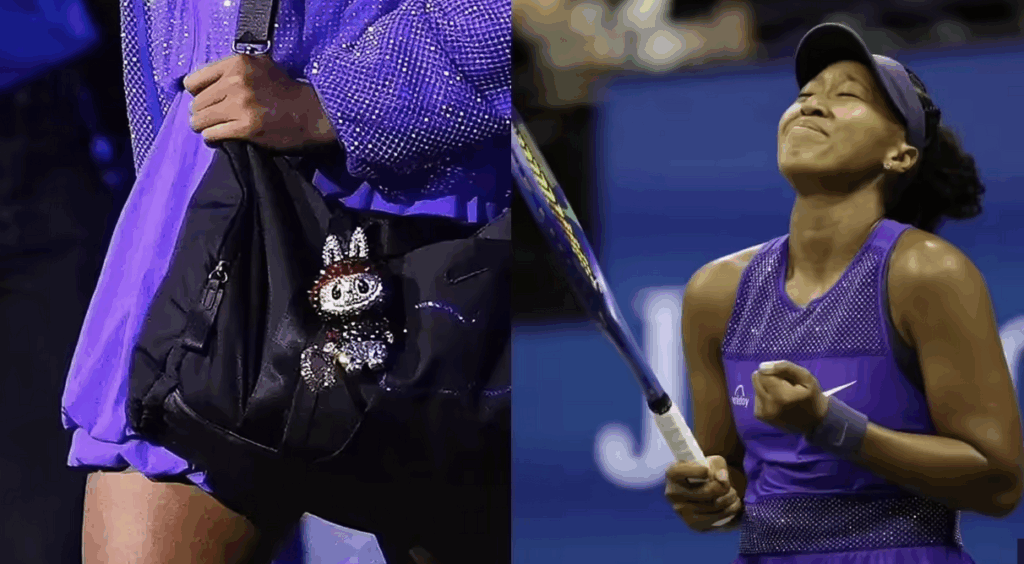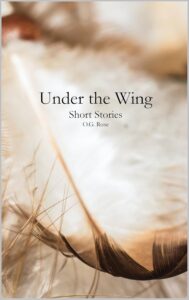
This article is written by the What is Metamodern? team with research, insights, and inspiration from Troy Campbell.
Labubu, the plushy goblin-child of Hong Kong illustrator Kasing Lung, has emerged as one of the buzziest Consumer Products of 2025. They’re of interest for how they embody certain aesthetic paradoxes we talk about here at What is Metamodern? as well as for what the trend shows about the popularity and spread of metamodern aesthetics.
These zoomorphic elves, part of Pop Mart’s “The Monsters” series, oscillate between kawaii innocence and devilish mischief. Their “ugly-cute” appeal—gremlin-like yet huggable—has captivated adult collectors and celebrities alike, from KPop group Blackpink’s Lisa to tennis champion Naomi Osaka, who sported a different Labubu for each of her matches at the 2025 US Open. In a cultural moment defined in part by ironesty, Labubu comes to us as not only a toy or fashion accessory, but also a symbol – a statement about a major way that people consume, feel, and perform their identities in late capitalism.

Tennis champion Naomi Osaka accessorizing with a Labubu on her gear bag. Photos by The Times of India.
The phenomenon is driven by the blind box model, a marketing strategy that trades on surprise, scarcity, and emotional gambling. Buyers don’t know which figure they’ll receive, and the possibility of scoring a rare variant adds a dopamine thrill that can amplify the experience of being a consumer in our hypermediatized moment.
As Liza Corsillo writes in The Strategist, Labubu’s appeal lies in its “hard-to-explain cuteness—they’re kind of ugly, but huggable, with a devilish grin—as well as surprise and scarcity.” This tension between innocence and monstrosity is precisely what makes us think of Labubu as metamodern: It invites both “ironic attachment” and genuine affection. Vogue’s feature, “And They Call It Plushie Love”, captures this duality with quotes from enthusiasts showing how these toys function as sentimental souvenirs and therapeutic objects in an unstable world. One user caricatures himself thusly:
There’s something exquisitely derailing about spiraling into a plush-toy addiction while emotionally regressing at your mother’s house in Chiang Mai—jet-lagged across three time zones, spiritually bankrupt, and one herbal compress away from a full breakdown. Then I met Labubu. Something in my chest snapped—and then instantly healed. One blind box in and I was no longer a man. I was mother, cradling a deranged little goblin with the reverence of a Victorian widow at a séance.
This Labubu fan seems to understand himself as if he is a figure in a narrative of some sort – perhaps a film, or…? – starring himself and the product in a dynamic that oscillates between irony and earnest vulnerability.
Relatedly, Labubu’s rise parallels a broader cultural embrace of “monster cute”—a genre that includes current examples such as Monster High dolls, Lady Gaga’s “little monsters,” K-Pop Demon Hunters and the demon-boy protagonist of Ne Zha II. The term “meta-cute” may apply to all of these, along with Labubu. As defined by WiM? editor Greg Dember, meta-cute “has to do with things that evoke childlike innocence and simplicity, but are meant for usage by adults.” It should also be noted that WiM editors Dember and Linda Ceriello have both theorized about a metamodern iteration of the monster trope in popular culture. Using the show Buffy the Vampire Slayer (1997-2003), along with other exemplars, we’ve tracked the emergence of the “metamodern monster” back to the early years of the metamodern turn. Paraphrasing Ceriello’s 2018 dissertation,
Of the many other contemporary examples of monsters with metamodern multivalency beyond the Whedonverse presented in film and television, the TV series True Blood (2008–2014) for example, has several lead vampire characters showcasing the monstrous other with a complex humanity. Portraying the monstrous other as no-longer scary occurs in Monsters, Inc. (2001)where cartoon monsters battle their own fears of humans.
Other older examples she notes include the Twilight novels (2005-2008) and films (2008-2012), Hellboy (2004), Paul (2011) the TV series Being Human (2018-2013), and Lucifer (2016-2021). An IRL example given is the “alt-scouting community” Monster Rangers – whose charming website defines the group as a “CREATIVE & KIND COMMUNITY” … “a bunch of geeks, introverts and creative folks who share stories, friendship and a love of monsters.” Labubu and its cultural cousins seem to bring together the meta-cute and the metamodern monster, with an aesthetic in which monstrosity is not feared but adored, a playful rebellion against polished perfection.
Labubu is indeed the consumerist crack of the moment. Its combination of cuteness and benign mischievousness exemplifies the “neutered monster” – one that people post silly photos or videos with and cradle them with optionally ironic reverence as they laugh at their own obsessions. For some it may be their plushy portal into the metamodern sensibility.
As our colleague, consumer psychologist Troy Campbell has noted, in a time when futures feel uncertain, Labubu is a collectible coin toss bought in iconic blind boxes – an emblem of how we gamble on joy, even when we know the game is rigged.

